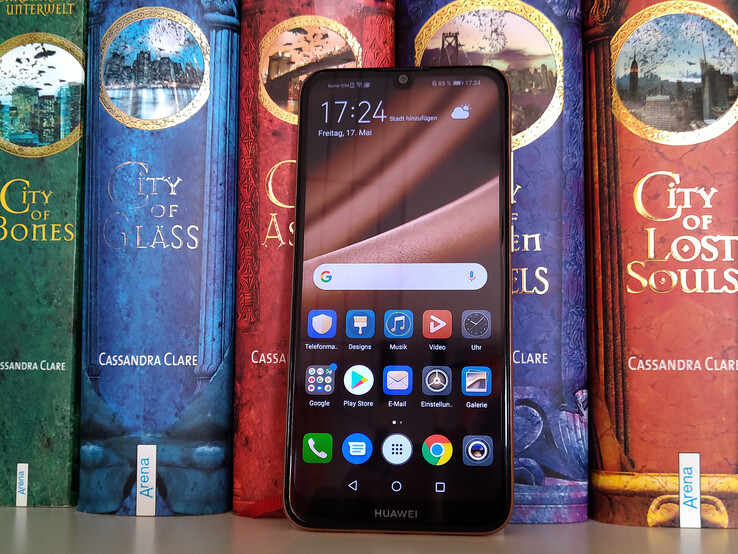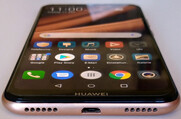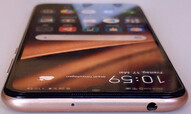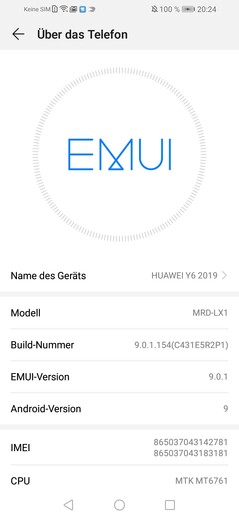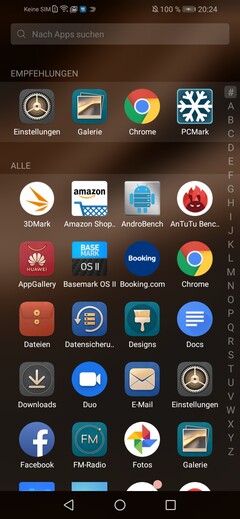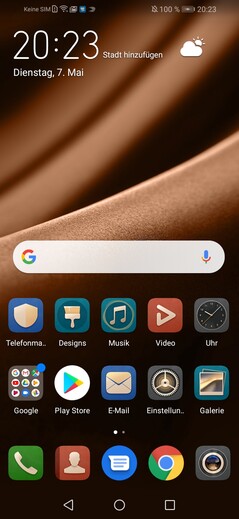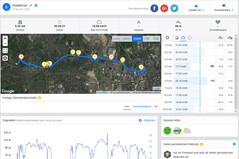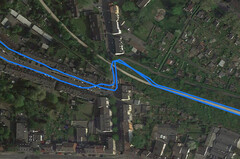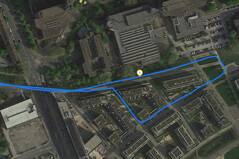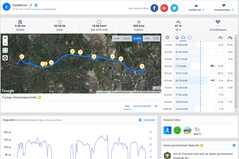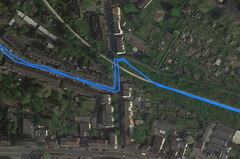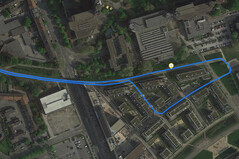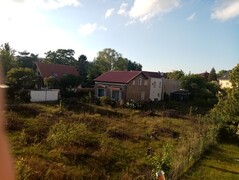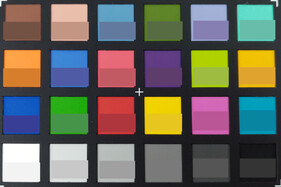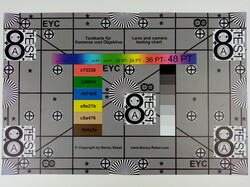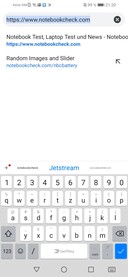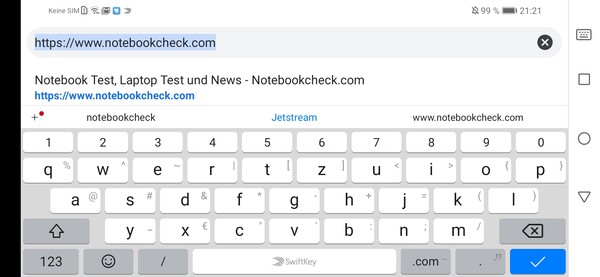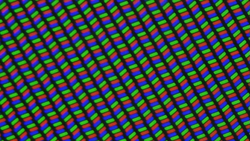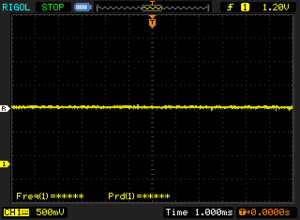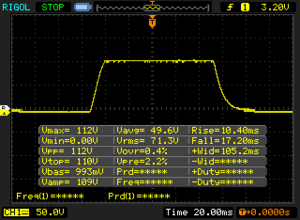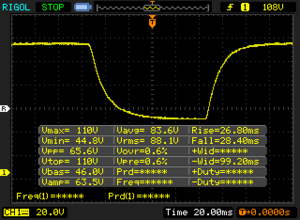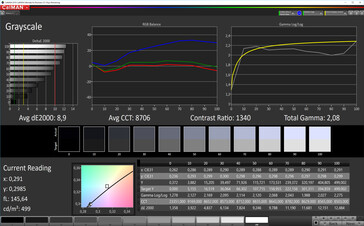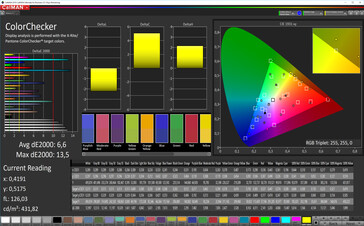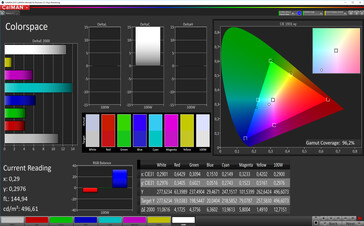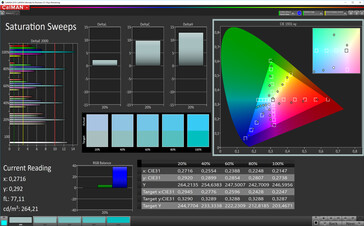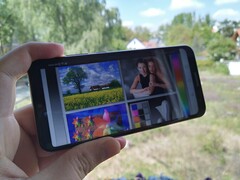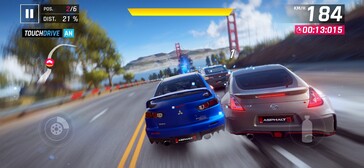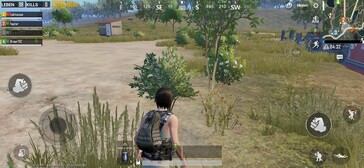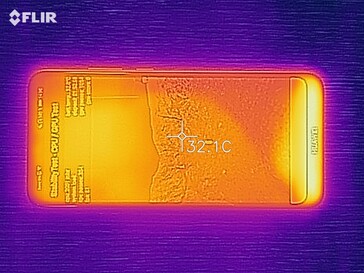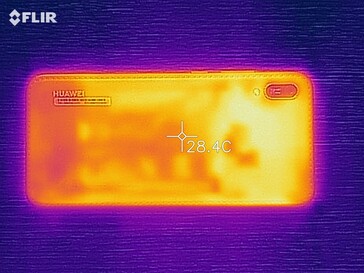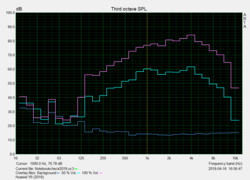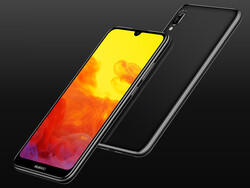Huawei Y6 (2019) Smartphone Review
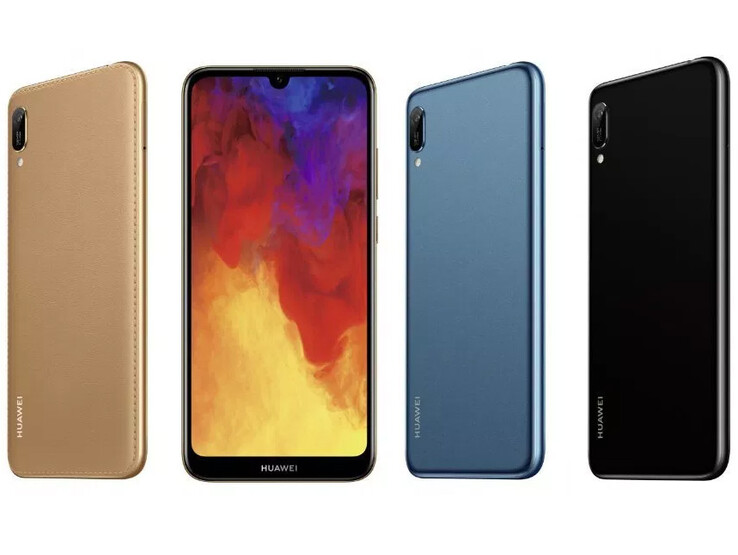
Huawei's Y series is the company's entry-level family. If you're looking for a budget smartphone, you'll find it here. No-one would have excessively high expectations in this case, but it's exactly here that Huawei surprises us by promising high performance and even something that can't be found on any entry-level smartphone: Decent low-light photography. This isn't advertised by any of its competitors, which include predecessors like the Huawei Y6 (2018), Huawei Y7 (2019), Xiaomi Redmi 7, Honor 8A and the Samsung Galaxy J4 Plus (2018), among others. In comparison to the predecessor, there are moderate yet reasonable improvements: A bigger and more modern display without bezels but with a notch instead, and twice as much storage in addition. The main differences with the Huawei Y7 (2019), which costs 50 Euros (~$56) more, are its fingerprint scanner, a slightly larger display, a bigger battery and a secondary lens for the main camera, which is used to produce a bokeh effect.
Case - Art in leather
The Huawei Y6 (2019) is available in three colors: Midnight Black, Sapphire Blue and Amber Brown. The three variants differ from one another not only in their colors but also in the materials used for the back side. The first two color options come with a plain plastic back; the khaki-colored version features, on the other hand, a false seam on the edge and manages to mimic leather, albeit with a simple composition. It's hard to think of the surface as real leather when you touch it, as it feels like very cheap and dry leather at best. In terms of design, we can consider Huawei's choice to be bold, at least. Not everyone will like it, but at least it brings some diversity to the multitude of plain plastic, glass and metal back sides.
Just like the back side, the frame is also more hype than substance. Although it looks like metal, it's actually made of painted plastic. This could quickly start to look shabby after a certain time in use, but it looks sufficiently high-quality when new. Considering the price tag of around 150 Euros (~$168), both the materials and the build quality are decent. It doesn't leave any room for criticism with its even gap dimensions and decent torsional rigidity, even the buttons located on the right side of the device fit perfectly within the frame and work excellently.
The slight camera bump in the Huawei Y6 (2019) wasn't bothersome, instead, what caught our attention – again, considering the price – was the amazingly narrow bezel around the display. The front camera is found in the upper mid-section of the front side of the device within a notch. The earpiece speaker, sensors and a notification LED are all placed in this area too, just like with the "big boys"! The microUSB port on the bottom of the device is the only aspect that reveals the low price of the 2019 Y6. Thanks to a size of only 156.3 x 73.5 x 8 millimeters and a weight of 150 grams, the smartphone remains very manageable despite its 6.1-inch display.
Connectivity - Adequate for everyday use
The smartphone comes with the quad-core MediaTek MT6761 processor, which is accompanied by 2 GB RAM. How this can lead to the advertised "outstanding performance" is only known by Huawei's marketing department. On the other hand, this is a typical, almost good configuration for an entry-level smartphone. In this price range, no-one can complain about having 32 GB of storage with the possibility to expand it by up to 512 GB (exFat supported) – quite the contrary. However, some gaps are to be found when looking at the specifications in detail.
Prospective buyers will look for NFC to no avail, as well as for fast AC Wi-Fi. The Y6 (2019) also lacks a fingerprint scanner and LTE is limited to Cat 6 (300 Mb/s). But that's not the end of the world. The use of a microUSB port is more bothersome; instead of this it would have been nice to finally start seeing Type-C in the entry-level range. On the contrary, the 3.5 mm jack for traditional headsets will make lots of users happy.
Software - The Y6 (2019) comes with up-to-date Android
While Type-C is still missing in the lower price range in 2019, manufacturers have understood over time that an up-to-date operating system should also be present at low prices. In this regard, Huawei has installed Android 9 Pie on the Y6 (2019) and has also added its own features through its EMUI 9.0.1 custom user interface. For example, it allows the user to do without an app drawer (but this can be activated) and also provides access to additional Huawei apps such as Designs. Unfortunately, Huawei didn't opt for a Widevine-L1 certification, so videos can't be streamed at HD resolution. Nevertheless, this isn't so bad due to the display's resolution being only 720p+.
Communication and GPS - Minor weaknesses at receiving
Regarding Wi-Fi speed, we observed a contradictory behavior in our measurements using our Linksys EA8500 reference router. The Huawei smartphone was the fastest among all comparison devices at receiving data, whereas it was the slowest at sending data. That the model didn't come out on top is no surprise. Users have access to a few LTE frequencies, but these cover the most important ones in Europe. Globetrotters will not be too happy with this, but it shouldn't be a problem to everyone else though.
| Networking | |
| iperf3 transmit AX12 | |
| Xiaomi Redmi 7 | |
| Huawei Y6 2018 | |
| Huawei Y7 2019 | |
| Samsung Galaxy J4 Plus 2018 | |
| Huawei Y6 2019 | |
| Honor 8A | |
| iperf3 receive AX12 | |
| Huawei Y6 2019 | |
| Honor 8A | |
| Huawei Y7 2019 | |
| Xiaomi Redmi 7 | |
| Huawei Y6 2018 | |
| Samsung Galaxy J4 Plus 2018 | |
No AC Wi-Fi with 5 GHz, no NFC – what then? For example, A-GPS with support for Glonass and BDS. This is at least normally enough for everyday use, but expectations shouldn't be raised too high. The Huawei Y6 (2019) has no reception indoors, even near a window you have to wait a while for it to be established. Outdoors, a connection can't be established as quickly as with top-of-the-line models, but it is good enough and stable.
Telephone and call quality - The Huawei Y6 (2019) has good sound
Loudness and clarity are good, both parties involved in a call shouldn't have any major issues thanks to the good microphone on the Y6 (2019). Even quiet noises are transmitted due to the ambient noise attenuation. It's only lacking the last bit of quality, and furthermore, a slight rattling sound can be heard time and again at maximum volume. The speaker makes it possible to talk hands-free in quiet environments without issues, but it sounds a bit hollow and tinny. The current Y6 doesn't support VoLTE.
Cameras - Only shadows without proper lighting
The Huawei Y6 (2019) features a 13 MP main camera and an 8 MP front camera. There aren't any bells and whistles such as a dual-camera or triple-camera setup. The single main camera's maximum aperture of f/1.8 is no longer a highlight, which makes the manufacturer's claim of also being able to produce good pictures under poor lighting conditions even more surprising. The manufacturer is responsible for not having provided additional features that could have led to this – so where should the good quality come from?
As a matter of fact, the picture quality in low light is anything but good. The image sharpness falls abysmally and noise takes over – just as you would expect from a 150-Euro (~$168) smartphone. Considering this, the quality isn't the end of the world, but if you promise quality, you should deliver quality too. Unfortunately, Huawei failed in this regard with the Y6 (2019).
The camera performs better in daylight. Considering the price, we can certainly speak of good image quality here. This applies to the dynamic range, the image sharpness and the richness of detail. Viewed in full-screen, photos taken in good light look surprisingly crisp, only dark areas seem a bit drowned. When zooming in, the reason for this becomes evident: The software radically sharpens images, but in detail this produces some over-ambitious and artificial results. Most users, however, will probably approve of the sharpness processing.
The front camera produces poor results in low light, similar to the main camera. In addition, it doesn't handle brightly lit scenarios very well either. As a result, bright areas are quickly blown out and details get lost within a white background, where a cloudy sky should be actually. The image sharpness frequently fails to be pleasing too. However, the front camera is adequate for the occasional selfie or video call.
Not much should be expected from the main camera when it comes to video. The same limitations as with photos apply here; there is no image stabilization so that videos only look good when recorded under good lighting conditions and with a tripod.
Not only can we partly observe some evident deviations in color reproduction in our test chart but also a lack of image sharpness in detail and visible noise under minimally worsened conditions. Overall, the Huawei Y6 (2019) camera should only be used for occasional snapshots in bright daylight.
Accessories and warranty - Headset despite low price
The entry-level Huawei Y6 (2019) smartphone doesn't come with any surprises. Apart from typical paper bonuses such as the warranty conditions and the quick-start guide, Huawei only includes the smartphone, the charger with its USB cable and a SIM tool. Huawei doesn't follow the trend of not including a headset with budget smartphones. But considering its simple construction, one must wonder how much sense this makes. Users can listen to FM radio straight out of the box by means of the included headphones though. However, these will likely get replaced quickly and only end up further contributing to the pollution of the environment. Huawei honors a two-year warranty on the smartphone.
Input devices and handling - Decent touchscreen on the Y6 (2019)
The touchscreen on the budget Huawei Y6 (2019) is well coated, so that fingers glide easily on the glass surface. When typing with the on-screen keyboard, touch sensitivity was uniform in all areas of the screen, including the corners. Therefore, the smartphone worked without any issues, at least with easy tasks.
But rotating the device in order to take it from portrait mode into landscape mode takes around 1.5 seconds – this seems like an eternity. Switching from an app to the home screen or between different apps also takes a moment. Nevertheless, this can be sufficiently fast provided there isn't such a large number of apps in the background. Considering the device's price, the speed it provides in this regard is satisfactory. Instead of using a fingerprint scanner, users will have to resort to traditional methods like the pattern or PIN input. Otherwise, a simple facial recognition system is available too. It works fast under proper lighting conditions and is relatively reliable, but as with all other Android smartphones that lack a special 3D front camera, it's still a very insecure method.
Display - Modern screen
The LCD found on 2019's Huawei Y6 measures 6.1 inches and provides 1560x720 pixels. This results in about only 280 pixels per inch, but most users would only notice a lack in sharpness with the help of a magnifying glass. Brightness is decent for an entry-level device at 485 cd/m², and the same goes for the sufficiently uniform brightness distribution.
The black level and contrast is also a bit better on the Y6 (2019) compared to its predecessor from 2018. It performs excellently compared to its direct competition too. Even when it comes to grayscales, the current model still manages to impress. It only shows some shortcomings in regards to color accuracy. However, most users will only notice this at best when comparing the device directly to one with a considerably better display.
| |||||||||||||||||||||||||
Brightness Distribution: 89 %
Center on Battery: 487 cd/m²
Contrast: 1391:1 (Black: 0.35 cd/m²)
ΔE ColorChecker Calman: 4.3 | ∀{0.5-29.43 Ø4.78}
ΔE Greyscale Calman: 4.1 | ∀{0.09-98 Ø5}
96.3% sRGB (Calman 2D)
Gamma: 2.09
CCT: 7312 K
| Huawei Y6 2019 IPS LCD, 1560x720, 6.1" | Huawei Y6 2018 IPS, 1440x720, 5.7" | Huawei Y7 2019 IPS, 1520x720, 6.3" | Xiaomi Redmi 7 IPS, 1520x720, 6.3" | Honor 8A IPS, 1520x720, 6.1" | Samsung Galaxy J4 Plus 2018 IPS, 1480x720, 6" | |
|---|---|---|---|---|---|---|
| Screen | -15% | -4% | -6% | -10% | -36% | |
| Brightness middle (cd/m²) | 487 | 483 -1% | 547 12% | 444 -9% | 522 7% | 558 15% |
| Brightness (cd/m²) | 485 | 460 -5% | 543 12% | 441 -9% | 542 12% | 549 13% |
| Brightness Distribution (%) | 89 | 88 -1% | 94 6% | 90 1% | 94 6% | 89 0% |
| Black Level * (cd/m²) | 0.35 | 0.4 -14% | 0.49 -40% | 0.45 -29% | 0.47 -34% | 0.57 -63% |
| Contrast (:1) | 1391 | 1208 -13% | 1116 -20% | 987 -29% | 1111 -20% | 979 -30% |
| Colorchecker dE 2000 * | 4.3 | 5.8 -35% | 4.5 -5% | 3.94 8% | 4 7% | 7 -63% |
| Colorchecker dE 2000 max. * | 10.1 | 12.6 -25% | 7.9 22% | 6.72 33% | 9.5 6% | 13.3 -32% |
| Greyscale dE 2000 * | 4.1 | 5 -22% | 5 -22% | 4.8 -17% | 6.6 -61% | 9.4 -129% |
| Gamma | 2.09 105% | 2.6 85% | 2.35 94% | 2.294 96% | 2.28 96% | 2.15 102% |
| CCT | 7312 89% | 7709 84% | 7400 88% | 7445 87% | 7258 90% | 9626 68% |
| Colorchecker dE 2000 calibrated * | 4.42 |
* ... smaller is better
Screen Flickering / PWM (Pulse-Width Modulation)
| Screen flickering / PWM not detected | |||
In comparison: 53 % of all tested devices do not use PWM to dim the display. If PWM was detected, an average of 8108 (minimum: 5 - maximum: 343500) Hz was measured. | |||
The panel on the Huawei Y6 (2019) also performs exemplary in terms of flickering. The screen on the entry-level smartphone doesn't show any abnormalities in its refresh rate and can therefore also be recommended to users who are sensitive to display flicker.
Display Response Times
| ↔ Response Time Black to White | ||
|---|---|---|
| 27.6 ms ... rise ↗ and fall ↘ combined | ↗ 10.4 ms rise | |
| ↘ 17.2 ms fall | ||
| The screen shows relatively slow response rates in our tests and may be too slow for gamers. In comparison, all tested devices range from 0.1 (minimum) to 240 (maximum) ms. » 69 % of all devices are better. This means that the measured response time is worse than the average of all tested devices (20.2 ms). | ||
| ↔ Response Time 50% Grey to 80% Grey | ||
| 55.2 ms ... rise ↗ and fall ↘ combined | ↗ 26.8 ms rise | |
| ↘ 28.4 ms fall | ||
| The screen shows slow response rates in our tests and will be unsatisfactory for gamers. In comparison, all tested devices range from 0.165 (minimum) to 636 (maximum) ms. » 92 % of all devices are better. This means that the measured response time is worse than the average of all tested devices (31.6 ms). | ||
The display should normally be readable outdoors thanks to the good stability of its viewing angles and the sufficient brightness. Issues arise only under direct sunlight, where users will need to look for some shade. The front camera is placed within a dewdrop notch in the upper mid-section of the display. This design allows for narrow bezels around the display and results in a modern-looking smartphone.
Performance - Nothing for gamers
That the smartphone is "equipped for outstanding performance" is one of the things advertised on the manufacturer's home page – this is obviously an exaggeration from the copywriters' side. Naturally, you can't talk about "outstanding performance" when it comes to a smartphone that costs 150 Euros (~$168) – at least not when comparing it to its current rivals. The Huawei Y6 (2019) does offer an increase in CPU and GPU performance of 10 to 20% compared to its predecessor, but rivals like the Xiaomi Redmi 7 are partly significantly faster. Also the Honor 8A sibling model that poses in-house competition is considerably faster in most cases. However, performance in the Huawei model is mostly adequate for everyday use.
| Basemark GPU 1.1 | |
| 1920x1080 Vulkan Medium Offscreen (sort by value) | |
| Huawei Y6 2019 | |
| Honor 8A | |
| Vulkan Medium Native (sort by value) | |
| Huawei Y6 2019 | |
| Honor 8A | |
| 1920x1080 OpenGL Medium Offscreen (sort by value) | |
| Huawei Y6 2019 | |
| Honor 8A | |
| Average Mediatek Helio A22 MT6761 (n=1) | |
| AnTuTu v7 - Total Score (sort by value) | |
| Huawei Y6 2019 | |
| Huawei Y6 2018 | |
| Huawei Y7 2019 | |
| Xiaomi Redmi 7 | |
| Honor 8A | |
| Samsung Galaxy J4 Plus 2018 | |
| Average Mediatek Helio A22 MT6761 (63421 - 65996, n=5) | |
| Basemark ES 3.1 / Metal - offscreen Overall Score (sort by value) | |
| Honor 8A | |
| Average Mediatek Helio A22 MT6761 (102 - 104, n=2) | |
| Average of class Smartphone (205 - 7731, n=35, last 2 years) | |
A similar behavior can be observed in regards to browser benchmarks. The new Y6 has enough power for easy tasks, even images are loaded quickly. But there are faster smartphones available for the same price.
| Jetstream 2 - 2.0 Total Score | |
| Average of class Smartphone (23.8 - 387, n=149, last 2 years) | |
| Xiaomi Redmi 7 (Chrome 73) | |
| Average Mediatek Helio A22 MT6761 (13.4 - 20.3, n=6) | |
| Huawei Y6 2019 | |
| Huawei Y7 2019 (Chrome 73.0.3683.90) | |
| Honor 8A | |
| Speedometer 2.0 - Result 2.0 | |
| Average of class Smartphone (15.2 - 643, n=122, last 2 years) | |
| Xiaomi Redmi 7 (Chome 73) | |
| Huawei Y6 2019 (Chrome) | |
| Honor 8A (Chrome) | |
| Huawei Y7 2019 (Chrome 73.0.3683.90) | |
| Average Mediatek Helio A22 MT6761 (12.5 - 15.7, n=5) | |
| WebXPRT 3 - Overall | |
| Average of class Smartphone (38 - 380, n=31, last 2 years) | |
| Xiaomi Redmi 7 (Chrome 73) | |
| Huawei Y6 2019 | |
| Huawei Y7 2019 (Chrome 73.0.3683.90) | |
| Average Mediatek Helio A22 MT6761 (30 - 39, n=6) | |
| Honor 8A (Chrome) | |
| Huawei Y6 2018 (Chrome 66) | |
| Samsung Galaxy J4 Plus 2018 (Chrome 71.0.3578.98) | |
| Octane V2 - Total Score | |
| Average of class Smartphone (2228 - 121337, n=197, last 2 years) | |
| Xiaomi Redmi 7 (Chrome 73) | |
| Average Mediatek Helio A22 MT6761 (3920 - 5041, n=8) | |
| Huawei Y6 2019 (Chrome) | |
| Honor 8A (Chrome) | |
| Huawei Y7 2019 (Chrome 73.0.3683.90) | |
| Samsung Galaxy J4 Plus 2018 (Chrome 71.0.3578.98) | |
| Huawei Y6 2018 (Chrome 66) | |
| Mozilla Kraken 1.1 - Total | |
| Huawei Y6 2018 (Chrome 66) | |
| Samsung Galaxy J4 Plus 2018 (Chrome 71.0.3578.98) | |
| Honor 8A (Chrome) | |
| Huawei Y7 2019 (Chrome 73.0.3683.90) | |
| Average Mediatek Helio A22 MT6761 (9310 - 12215, n=6) | |
| Huawei Y6 2019 | |
| Xiaomi Redmi 7 (Chrome 73) | |
| Average of class Smartphone (257 - 28190, n=154, last 2 years) | |
* ... smaller is better
The Huawei Y6 (2019) is on par with comparison devices in terms of storage read and write speeds. The microSD slot, whose performance we tested using a Toshiba Exceria Pro M50, is also able to keep up.
| Huawei Y6 2019 | Huawei Y6 2018 | Huawei Y7 2019 | Xiaomi Redmi 7 | Honor 8A | Samsung Galaxy J4 Plus 2018 | Average 32 GB eMMC Flash | Average of class Smartphone | |
|---|---|---|---|---|---|---|---|---|
| AndroBench 3-5 | -22% | 6% | -2% | -5% | -9% | -7% | 1201% | |
| Sequential Read 256KB (MB/s) | 279.3 | 254.3 -9% | 305 9% | 298 7% | 265 -5% | 292.1 5% | 242 ? -13% | 2228 ? 698% |
| Sequential Write 256KB (MB/s) | 107.8 | 65.6 -39% | 88.8 -18% | 84.7 -21% | 104 -4% | 99.6 -8% | 100.5 ? -7% | 1852 ? 1618% |
| Random Read 4KB (MB/s) | 69 | 38.8 -44% | 83.5 21% | 73.6 7% | 61 -12% | 48.42 -30% | 43.1 ? -38% | 296 ? 329% |
| Random Write 4KB (MB/s) | 15 | 9 -40% | 17.48 17% | 14.4 -4% | 15 0% | 13.33 -11% | 22.3 ? 49% | 339 ? 2160% |
| Sequential Read 256KB SDCard (MB/s) | 83.2 ? | 84.9 ? 2% | 86.4 ? 4% | 85.9 ? 3% | 81.9 -2% | 76.7 ? -8% | 71.8 ? -14% | |
| Sequential Write 256KB SDCard (MB/s) | 64.4 ? | 64 ? -1% | 65.8 ? 2% | 63.3 ? -2% | 61.8 -4% | 62.3 ? -3% | 52.9 ? -18% |
Games - More like the Angry Birds type
Fans of demanding games like Asphalt 9 or PUBG Mobile won't get their money's worth with the new Huawei Y6 (2019). The loading times are already an imposition. This is not only due to the device itself but instead has a lot more to do with the device class it belongs to: Current entry-level smartphones simply still don't have the performance required to allow playing taxing 3D games smoothly. This applies to the built-in PowerVR GE8320 and the combination of processor and storage. The Huawei model can only be recommended for playing light games such as Angry Birds, hard-core gamers will have to spend more and look for something in the mid-range or even among high-end devices.
Asphalt 9: Legends (medium settings)
PUBG Compare (lowest settings)
Shadow Fight 3 (medium settings)
Emissions - Cool guy
Temperature
The Huawei Y6 (2019) remains cool during everyday tasks. With maximum temperatures of about 34 °C (~93 °F), the Android smartphone always keeps a low profile. Especially in winter, one would almost wish that it got a little warmer. There's hardly any difference between temperatures under load and on standby.
(+) The maximum temperature on the upper side is 33.6 °C / 92 F, compared to the average of 35.2 °C / 95 F, ranging from 21.9 to 247 °C for the class Smartphone.
(+) The bottom heats up to a maximum of 29.5 °C / 85 F, compared to the average of 34 °C / 93 F
(+) In idle usage, the average temperature for the upper side is 28.9 °C / 84 F, compared to the device average of 32.9 °C / 91 F.
Speaker
The entry-level device's speaker makes a subtle appearance, but thankfully it stays away from the quality it showed during phone calls. There it sounded a bit tinny, almost somewhat hollow. Music, on the other hand, sounds almost voluminous and is reproduced really loudly – surprising! Compared to the predecessor, Huawei did a good job here.
Headphones can be used through the included 3.5 mm port or over Bluetooth. The provided headset should be replaced due to its lack of quality, but we found sound to be of high-quality when using a third-party headset.
Huawei Y6 2019 audio analysis
(+) | speakers can play relatively loud (90.9 dB)
Bass 100 - 315 Hz
(-) | nearly no bass - on average 23.3% lower than median
(±) | linearity of bass is average (11.3% delta to prev. frequency)
Mids 400 - 2000 Hz
(+) | balanced mids - only 4.5% away from median
(+) | mids are linear (4.5% delta to prev. frequency)
Highs 2 - 16 kHz
(±) | higher highs - on average 5.7% higher than median
(+) | highs are linear (4.6% delta to prev. frequency)
Overall 100 - 16.000 Hz
(±) | linearity of overall sound is average (19.1% difference to median)
Compared to same class
» 24% of all tested devices in this class were better, 9% similar, 67% worse
» The best had a delta of 11%, average was 35%, worst was 134%
Compared to all devices tested
» 45% of all tested devices were better, 7% similar, 48% worse
» The best had a delta of 4%, average was 24%, worst was 134%
Huawei Y6 2018 audio analysis
(+) | speakers can play relatively loud (84.2 dB)
Bass 100 - 315 Hz
(-) | nearly no bass - on average 25.3% lower than median
(±) | linearity of bass is average (11% delta to prev. frequency)
Mids 400 - 2000 Hz
(±) | higher mids - on average 5.3% higher than median
(+) | mids are linear (5.5% delta to prev. frequency)
Highs 2 - 16 kHz
(±) | higher highs - on average 10.8% higher than median
(+) | highs are linear (2.1% delta to prev. frequency)
Overall 100 - 16.000 Hz
(±) | linearity of overall sound is average (27.4% difference to median)
Compared to same class
» 71% of all tested devices in this class were better, 5% similar, 24% worse
» The best had a delta of 11%, average was 35%, worst was 134%
Compared to all devices tested
» 83% of all tested devices were better, 4% similar, 13% worse
» The best had a delta of 4%, average was 24%, worst was 134%
Battery runtime - Surprisingly long battery life
Energy consumption
The battery in the Huawei Y6 (2019) delivers 3020 mAh – this is an adequate capacity considering the rest of the hardware. However, power consumption is more important, and the new Y6 makes a big leap forward here compared to last year's model. Consumption drops partly by almost 190%, in idle usage on average by almost a third and under load by over 80%. The Y6 (2019) also performs very well compared to its rivals.
| Off / Standby | |
| Idle | |
| Load |
|
Key:
min: | |
| Huawei Y6 2019 3020 mAh | Huawei Y6 2018 3000 mAh | Huawei Y7 2019 4000 mAh | Xiaomi Redmi 7 4000 mAh | Honor 8A 3020 mAh | Samsung Galaxy J4 Plus 2018 3300 mAh | Average Mediatek Helio A22 MT6761 | Average of class Smartphone | |
|---|---|---|---|---|---|---|---|---|
| Power Consumption | -91% | -1% | -28% | -32% | -26% | -16% | -73% | |
| Idle Minimum * (Watt) | 0.59 | 1.7 -188% | 0.51 14% | 1 -69% | 0.73 -24% | 0.68 -15% | 0.881 ? -49% | 0.842 ? -43% |
| Idle Average * (Watt) | 1.94 | 2.5 -29% | 1.7 12% | 1.7 12% | 2.07 -7% | 1.78 8% | 1.864 ? 4% | 1.439 ? 26% |
| Idle Maximum * (Watt) | 1.96 | 3.2 -63% | 1.85 6% | 2.1 -7% | 2.14 -9% | 1.82 7% | 2.13 ? -9% | 1.624 ? 17% |
| Load Average * (Watt) | 2.82 | 5.2 -84% | 3.17 -12% | 3.3 -17% | 4.3 -52% | 4.44 -57% | 3.1 ? -10% | 7.03 ? -149% |
| Load Maximum * (Watt) | 3.57 | 6.8 -90% | 4.44 -24% | 5.6 -57% | 5.96 -67% | 6.13 -72% | 4.12 ? -15% | 11.3 ? -217% |
* ... smaller is better
Battery runtime
The advantage seen in terms of energy consumption must be relativized, since long battery life often comes from batteries that are significantly bigger. However, the entry-level model also performs well in this area – compared to the previous model, the new smartphone was able to last 1.5 hours longer in our Wi-Fi test, and it also performed clearly better under load. Regular users will probably need to charge the device every two days on average. Models that have stronger batteries such as the Y7 (2019) provide even better battery life.
| Huawei Y6 2019 3020 mAh | Huawei Y6 2018 3000 mAh | Huawei Y7 2019 4000 mAh | Xiaomi Redmi 7 4000 mAh | Honor 8A 3020 mAh | Samsung Galaxy J4 Plus 2018 3300 mAh | |
|---|---|---|---|---|---|---|
| Battery runtime | -4% | 28% | 12% | 15% | 19% | |
| H.264 (h) | 13.4 | 11.7 -13% | 15.6 16% | 15 12% | 15.3 14% | 14 4% |
| WiFi v1.3 (h) | 12.2 | 10.7 -12% | 18.6 52% | 14.1 16% | 13.8 13% | 11.8 -3% |
| Load (h) | 4.2 | 4.7 12% | 4.9 17% | 4.5 7% | 5 19% | 6.6 57% |
| Reader / Idle (h) | 22.2 | 39.2 | 24.8 | 28.8 |
Pros
Cons
Verdict - Solid performance despite false advertising
If it does fail, the Huawei Y6 (2019) will do so due to the manufacturer's unrealistic advertising promises. The entry-level smartphone neither provides outstanding performance nor appealing low-light photography. But it doesn't have to since it's an entry-level smartphone. Apart from that, the new Y6 is a decent smartphone in relation to its price tag of about 150 Euros (~$168). This device is not for gamers, however.
The biggest flaw of the Huawei Y6 (2019) is its unrealistic advertising. Apart from this, the smartphone is rock-solid for its price.
It's stylish, it offers something different with the optional synthetic leather on the back, it's well-built and it fits nicely in the hand. In addition, there's a decent display with a largely bezel-less design and a notch, a good daylight camera and also enough power to ensure smooth performance in everyday usage. The lack of a fingerprint scanner is a bit unfortunate, as is the use of the old microUSB port. In exchange, the software is very much up-to-date.
Huawei Y6 2019
- 05/20/2019 v6 (old)
Stefan Schomberg




